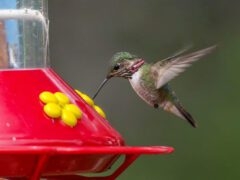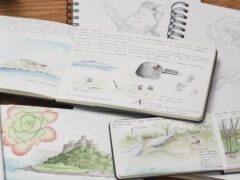Rock Sandpiper Similar Species Comparison
Main SpeciesRock Sandpiper
Nonbreeding adult/immature
Stocky, short-legged sandpiper with a drooping bill that is yellow at the base. Nonbreeding birds are pale gray above with spotting on the breast.
© Mason Maron / Macaulay LibraryWashington, November 29, 2020Breeding adult (tschuktschorum)
Stocky, short-legged sandpiper with a drooping bill that is yellow at the base. Breeding birds have a pale head, chestnut markings on the back, and a dark belly patch.
© Andrew Spencer / Macaulay LibraryAlaska, June 22, 2014Breeding
Males and females may incubate the eggs alone, or both parents may share the responsibility. Clutch sizes are generally between one and four eggs.
© Luke Eberhart-Hertel / Macaulay LibraryAlaska, June 26, 2012Nonbreeding adult/immature
Plumage brightest varies from darkest in the Aleutian Islands to palest in the Pribilof Islands. Nonbreeding birds are grayish above with gray spotting below.
© Johnny Bovee / Macaulay LibraryAlaska, October 04, 2016Juvenile
Juveniles have cinnamon edging on their back feathers and brownish spotting on the breast.
© Brian SullivanAugust 26, 2004Juvenile
Juveniles have cinnamon edging on their back feathers and brownish spotting on the beast.
© Alex Lamoreaux / Macaulay LibraryAlaska, August 02, 2017Molting adult
Adults molting from breeding plumage to winter plumage show a combination of characteristics. Stocky, short-legged stature and drooping bill help with identification.
© Brian Sullivan / Macaulay LibraryAlaska, August 26, 2004Nonbreeding adult/immature (with Black Turnstone)
Often seen huddling together on rocky coastlines or along breakwaters. Note stocky, short-legged stature and drooping bill that is yellow at the base.
© Judith R Taylor / Macaulay LibraryWashington, March 10, 2016Similar SpeciesPurple Sandpiper
Breeding
Rock Sandpipers are most similar to Purple Sandpipers, but their ranges do not overlap.
© Ryan Terrill / Macaulay LibraryFlorida, April 12, 2012Similar SpeciesDunlin
Breeding adult
The black patch on breeding Dunlin is more solid and located lower on the belly than on breeding Rock Sandpipers. Dunlin also tend to be a brighter rusty color.
© Andrew Spencer / Macaulay LibraryAlaska, May 21, 2013Similar SpeciesDunlin
Nonbreeding adult
Nonbreeding Dunlin do not have spotted sides like nonbreeding Rock Sandpipers do. They also have darker legs than Rock Sandpipers.
© Alix d'Entremont / Macaulay LibraryNova Scotia, October 12, 2014Similar SpeciesWandering Tattler
Nonbreeding
Wandering Tattlers are larger than Rock Sandpipers with brighter yellow legs and a longer bill.
© Brian Sullivan / Macaulay LibraryCalifornia, September 26, 2014Similar SpeciesSurfbird
Nonbreeding adult
Surfbirds have a smaller and stouter bill than Rock Sandpipers. They also have brighter yellow legs.
© Matt Brady / Macaulay LibraryCalifornia, January 09, 2011Compare with Similar Species
Click on an image to compare
Species in This Family
Sandpipers and Allies(Order: Charadriiformes, Family: Scolopacidae)
More to Read
Don't miss a thing! Join our email list
The Cornell Lab will send you updates about birds,
birding, and opportunities to help bird conservation.














































